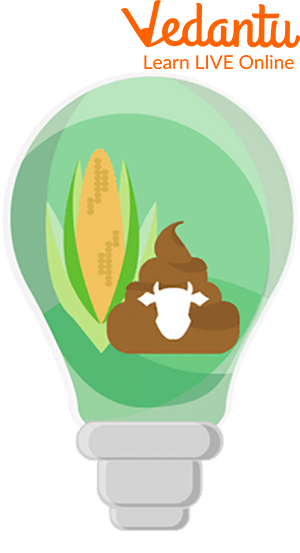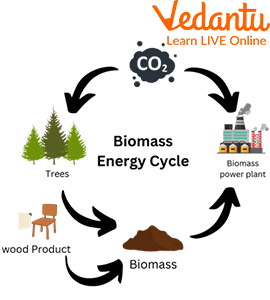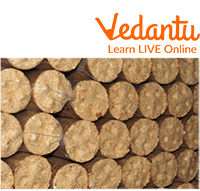




Biomass
Biomass refers to the total quantity of all living things in a particular area. The oldest fuel used by humans is biomass. In addition, it is also the most diverse. At present, it is also a clean and efficient source of heat and electricity generation. As the importance of renewable energy is increasing, the production of Biomass is also increasing.
Biomass is used as a fuel to generate heat and electricity. It is considered as a plant based material. Examples of biomass are wood, waste from households etc. Let’s now see it in detail.

Biomass
Biomass Fun Facts
One sort of organic material that can be utilised as a source of energy is biomass. Biomass can be used as a direct source of energy through combustion or in a converted form such as biofuel.
There are various ways to convert Biomass to biofuel, including biochemical, thermal and chemical.
The largest type of Biomass is still wood, but Biomass can be grown from sugarcane, sorghum, willow, poplar, maize, hemp and a variety of tree species.
There are two major categories of Biomass which include first-generation biofuels which involve fermenting sugar from one source into bioethanol, and second-generation biofuels which involve using municipal or agricultural water to make energy.

Biomass Energy Cycle
Biomass Energy
Biomass is also an important fuel for energy worldwide after coal, oil and natural gas. Biomass is renewable and free from total carbon dioxide emissions and is available in abundance on earth in the form of firewood, agricultural residues, cattle dung, urban waste etc.
The world's largest herd of cattle is in India. Therefore, there is a huge potential for the development of biogas. Biogas (methane or dung gas) is obtained by producing microbes by running the excretory materials of cattle in a digester at low temperatures. Biogas consists of 75 per cent methane gas which burns without producing smoke. Unlike wood, charcoal and coal, it does not leave any residue like ash after burning. In rural areas, it is used for cooking food and arranging lighting as fuel.
Biomass Briquettes
Briquettes made from Biomass are a biofuel substitute for coal and charcoal. Briquettes are mostly used in developing countries, where fuel for cooking is not readily available. Briquettes are increasingly being used in industrialised countries to heat industrial boilers that generate power from steam. The briquettes are combined with coal to make the heat supplied to the boiler.

Biomass Briquettes
Biomass Pellets
A pelletization mill creates Biomass pellets. The wood that is brought together here is inappropriate for use in other sectors, such as sawmill waste. The wood is broken down into chips, tested for quality, roasted to lower its moisture level to under 12%, and then powdered. The Biomass must first be cleansed to remove impurities before being converted into pellets. After that, the clean Biomass is chipped or crushed in a hammer mill to a consistent size that must be less than the thickness of the resulting pellet. Reducing the amount of horsepower required by the pellet mill by grinding the biomass
Biomass Power Plant
In Biomass power plants, wood or other waste is burned to create steam that powers a turbine and turns it into electricity or heats buildings and businesses. The main method for obtaining the majority of the electricity from Biomass is direct burning.
High-pressure steam is produced when Biomass is burned in a boiler. These turbine blades rotate as a result of the steam flowing over them. The rotation of the turbine powers a generator, which generates energy.
Summary
To conclude all the conceptual understanding regarding Biomass in this article we can say that as a food chain moves up from producers, the Biomass and energy contained in living things always decrease. Biomass is used to produce energy during respiration and is lost as waste. This is utilised for both movement and temperature regulation. A very little portion is utilised for growth. We hope you have understood the concept of Biomass, in case of any other queries, feel free to ask in the comments.
FAQs on Facts About Biomass
1. How does Biomass work?
Biomass consists of stored chemical energy from the sun. Plants produce Biomass by photosynthesis. Biomass can be directly burned for heat or can be converted into renewable liquid and gaseous fuels through a variety of processes. The scientific name of Gober gas is Biogas. Biogas is a clean, pollution-free, eco-friendly, and flammable gaseous fuel. Biogas mainly consists of methane 55 - 66 per cent, carbon dioxide 35 - 40 per cent and vapour in small amounts.
2. What are the types of biomass?
There are four types of biomass we use today:
1) wood and agricultural products;
2) solid waste;
3) landfill gas; and
4) alcohol fuel.
The most commonly available gasifiers use wood and wood biomass. Many other non-woody biomass materials can also be gasified. However, such materials require specially designed gasifiers and the biomass may have to be condensed in many situations. Because biomass is organic, it is composed of materials derived from living things like plants and animals. The most common biomass resources used as energy sources are plants, wood, and trash. We refer to these as biomass feedstocks. A non-renewable energy source is also possible for biomass energy.
3. What is the biggest potential source of biomass energy?
These materials include husk and straw. This amount of biomass is sufficient to generate 15000-25000 MW of electricity. Apart from this, electricity can also be generated from barren land, plants along the road and railway tracks etc. The amount of electricity to be generated from such biomass is estimated to be around 70000 MW. The largest biomass energy source available today is still wood. Food crops, grassy and woody plants, forestry or agricultural wastes, oil-rich algae, and the organic portion of municipal and industrial wastes are some more sources.









